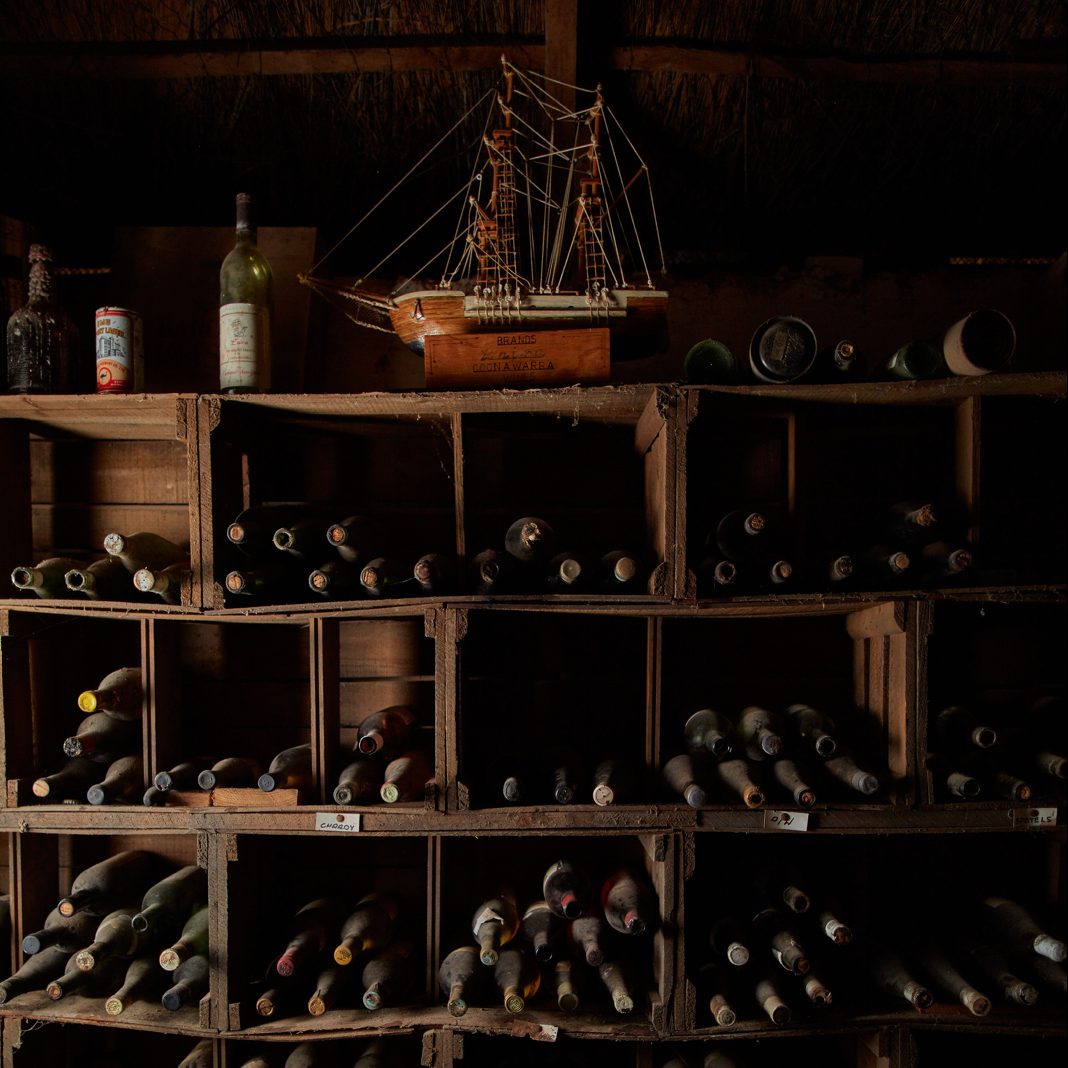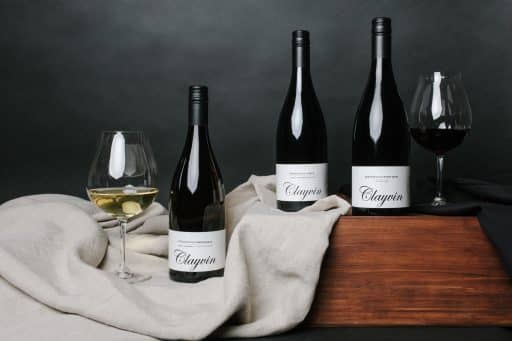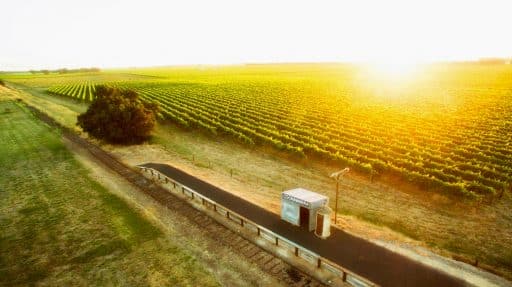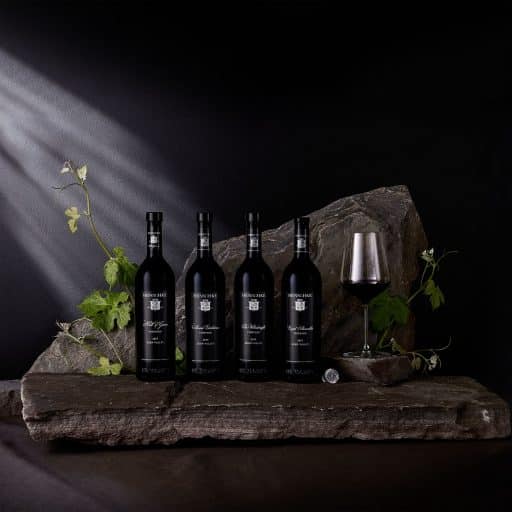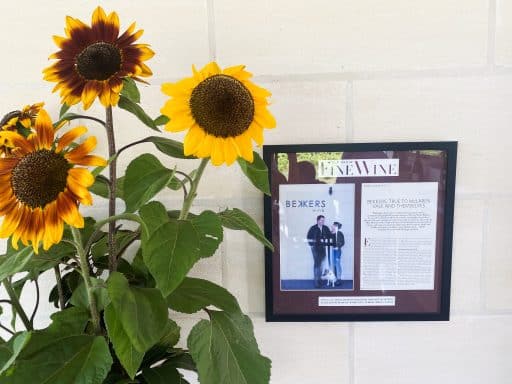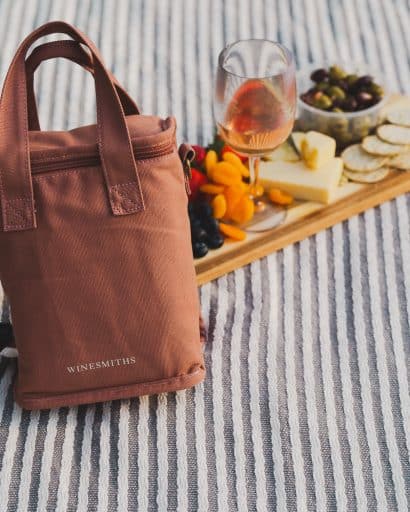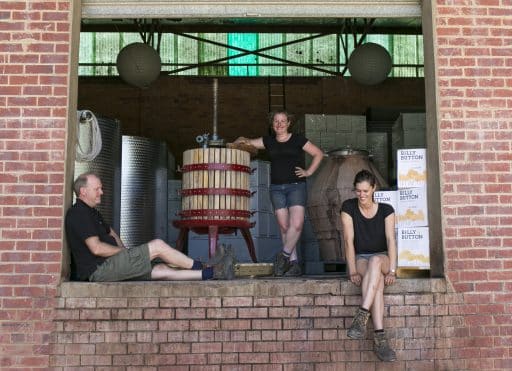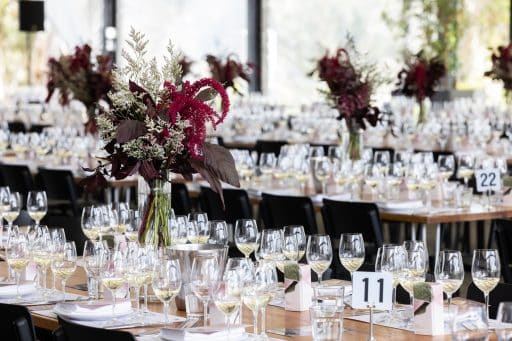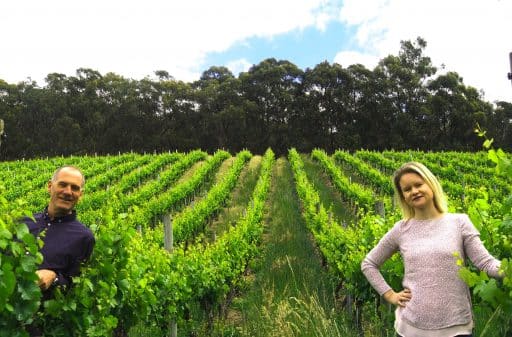Coonawarra. The name evokes images of swaying gum trees, ancient terra rossa soils and, of course, rich and age-worthy Cabernet. The area is incredibly isolated from other wine regions and therefore doesn’t enjoy the kinds of visitor numbers seen in places like the Barossa or McLaren Vale. So recently, I spent 72 hours in the region, courtesy of the South Australian Tourism Commission, in an effort to discover everything old and new, experimental and exciting about Coonawarra.
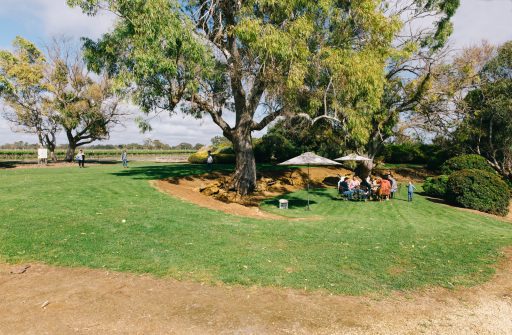
Day 1
Following a quick and enjoyable plane trip from Melbourne to Mount Gambier on Rex Airlines, I headed straight to Patrick of Coonawarra. Established in 1998 by Patrick Tocaciu, who had worked for many major labels, the brand is now overseen by his very capable son Luke, following Patrick’s untimely death in 2013. Patrick has vineyards in both Coonawarra and further north in Wrattonbully; the ‘Home Block’ was planted in the 1970s and is the source for its premium wines, which show concentrated flavours and the ability to cellar for many years.
Not wanting to solely follow a traditional path, Luke is not afraid to take risks, and one recent experiment has very much paid off. His Méthode range reimagines what can be done with certain varieties, focusing mainly on Cabernet and Riesling at this stage. His 2021 Méthode Cab Nouveau (A$32) is a light, oh-so-fruity and delicious expression of cabernet, a bit of a riff on Beaujolais Noveau, while the 2021 Méthode Eucalypt (A$32) emphasises, rather than minimises, the effect of eucalypt leaves on the grape – it’s surprising and surprisingly great. If you still want some richness, look no further than the 2012 Patrick Grand Reserve Coonawarra Cabernet (A$125), which is silky, multi-layered and magnificent.
Just over the road lies Hollick Estates, launched by Ian and Wendy Hollick in 1983, from a vineyard planted from 1975 onwards. The original cellar door was contained in a quaint cottage hugging the road, which has been replaced by a sprawling and aesthetically pleasing building, which also houses their restaurant, Upstairs. Chief winemaker Trent Nankivell gave me a tour of the impressive facilities, and the winery has grown significantly since its very humble beginnings, mainly due to investment from a Chinese property investment company, while still remaining true to the Hollick’s original vision.
In the wonderful company of Fran Bartosek, Hollick’s marketing liaison, I partook of lunch at Upstairs, which consisted of spicy and delectable chilli chicken followed by a superb eye fillet with garden vegetables and a side of crispy, oven-baked potatoes. The wines at Hollick straddle the approachable to the complex, my favourites being the 2021 Hollick Bond Road Coonawarra Chardonnay (A$27), a round and rich mix of flinty, stone-fruit characters, and the delightful 2020 Hollick Coonawarra Shiraz (A$27), with its bright red fruits and pastilles.
Only a short distance away is Di Giorgio Wines, a family company established in 2002 by Frank and Margot Di Giorgio. The vineyard includes some of the oldest Shiraz vines in Coonawarra, planted in the 1890s, while Cabernet and more Shiraz vines were planted in 1963. Their total vineyard footprint is huge, with 227 hectares in Coonawarra and a further 126 hectares in coastal Lucindale, growing a range of grapes such as Cabernet Franc, Merlot, Pinot Noir, Chardonnay and Tempranillo.
I was shown around the expansive winery by brand ambassador Anna Di Giorgio and cellar hand Richie, gaining a greater understanding of the business and what they’re trying to achieve. This became even clearer when doing a tasting with Bryan Tonkin, the assistant winemaker, who took me leisurely through their sparkling, white and red wines. The 2019 Di Giorgio Coonawarra Chardonnay (A$29) offers citrus, peach and blossom aromas over a silky smooth palate enlivened by bright acid, while the 2012 Di Giorgio Cabernet Sauvignon (A$29) is smoky and with a great mix of primary and tertiary fruit, a perfect accompaniment to a rich meal.
With my belly full and my teeth stained with tannin, I headed to Bellwether Wines, just north of Penola, where I’d sleep for the next three nights. Dinner on nights one and three consisted of a thick steak and sausage cooked in a cast-iron skillet over the coals, accompanied by a salad and some pleasant conversations with my fellow guests, which is one of the benefits of communal accommodation, particularly in a wine region.
Bellwether is run by Sue Bell, a winemaker who cut her teeth in wineries around Australia and in California and Bordeaux. Bell sources her grapes from growers in Coonawarra, Wrattonbully, Riverland, Tamar Valley and Heathcote, crafting wines from the usual suspects, as well as from many alternative varieties. If you like trying something a little different, Bellwether produces Barbera, Touriga, Tempranillo, Montepulciano, Malbec and Vermentino (the Barbera and Tempranillo were my favs). In regards to the “usual suspects”, the 2019 Bellwether Cabernet Sauvignon (A$35) is vibrant with ripe blackcurrant, chocolate, mint and cigar box notes, yet the 2016 Bellwether Premium Cabernet (A$70) is darker and more ethereal, offering mouth-coating richness, fine tannins, and exceptional balance in an elegant wine.
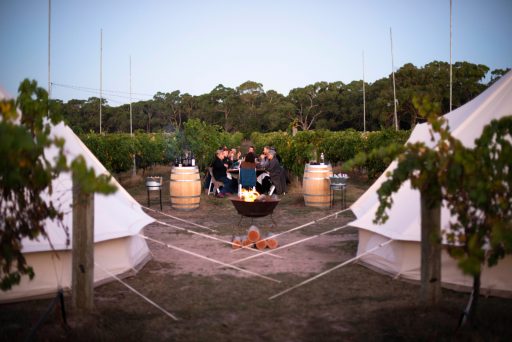
Day 2
A toasty night was had in my glamping tent, and I awoke to the sounds of magpies, kookaburras and a cheeky rooster on the cold and misty morning. Following a scrumptious breakfast of rye bread toast, chia pudding, coffee and a pastry, I headed off to Raidis Estate, a short drive down the highway. The winery was established in 1990 by Greek natives Chris and Fran Raidis with the planting of grape vines, although their link to the red soils of Coonawarra began much earlier in the farming of tomatoes, lettuce and strawberries. Winemaking duties are now undertaken by their son Steven, joined by wife Emma, who are both extremely passionate about not only creating great wine but also in showcasing its role in enhancing a meal.
At Raidis on a chilly Thursday morning, I skipped over the whites and instead did a special tasting of their premium The Trip Cabernet, from vintages 2008, 2012, 2013 and 2015, next to the 2018 Billy Cabernet ($A35) as a comparison. This was a fascinating experience, as each wine presented itself quite differently and also had varying ratios of Cabernet to Shiraz and/or Merlot in the blend. Steven and I intensely discussed my findings that the 2013 Raidis The Trip Cabernet (A$120) just pipped the 2012 The Trip Cabernet ($A150) as the best wine of the line-up: still lots of primary fruit, fully integrated tannins, persistent length, and such beautifully rich and vibrant black-fruit flavours with a full body.
After a tasty lunch of chicken tikka masala at the Royal Oak Penola, a relaxed pub on the main street, my next stop allowed my palate some time to rest from the tannin. Koonara was started by Trevor Reschke in 1988, simply because he liked the idea of making his own wine one day. His family has lived in the area since 1906, running a 3,000-acre cattle stud, of which part was used for the planting of the vineyard. The business is now run by Trevor’s son Dru and wife Nicole, joined by well-known winemaker Peter Douglas. One recent profound change has been to make the vineyard organic by reducing spraying, planting mid-row crops, and encouraging biodiversity, mainly in response to Trevor’s death from cancer, linked to the use of chemicals in the vineyard.
The desire for clean living certainly comes through in the wines, which are crisp and show great fruit purity. The 2022 Koonara Lucy and Alice Pinot Gris (A$28) displays wonderful melon, apple and pear characters, as well as some delicate notes of red fruits, with a light pink hue. The 2020 Koonara Wanderlust Coonawarra Cabernet (A$28), meanwhile, is a fruit bomb, with juicy and ripe confectionery, raspberry, mulberry and liquorice notes and a supremely balanced palate.
Dinner was a lovely and luscious affair that night at Pipers of Penola, run by chefs Simon and Erika Bowen, who focus predominantly on regional produce in what is quite a fertile part of Australia. My entrée consisted of seared scallops, udon noodles, shaved enoki, black garlic and roasted sesame seeds, followed by roasted Westerly Downs duck breast, herbed gnocchi, smoked pork cheek, mushrooms and broad beans – absolutely delicious. As I don’t like doing anything by halves, I finished the meal with a Valrhona Guanaja 70% dark chocolate mousse dome, mirror glaze, génoise sponge and Breton biscuit. I then rolled back to my accommodation and was quickly out for the night.
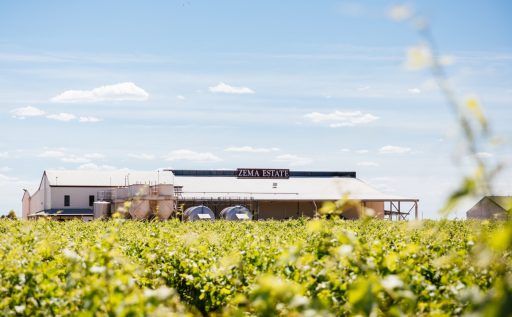
Day 3
After another hearty breakfast at Bellwether, I made my way to Wynns Coonawarra Estate, the region’s biggest and no doubt most famous winery. Due to the work of John Riddoch, Coonawarra emerged as a wine region in 1891 with the planting of 95,000 vines; that same year saw the construction of the large three-gabled winery which still features on their wine labels. The property was earmarked to become a wool shed until Samuel Wynn and son David purchased it in 1951. It then went through several changes of ownership, up to its current owner, Treasury Wine Estates. Much of Wynns’ improvements in vineyard and wine quality over the past two decades are thanks to senior winemaker Sue Hodder, winemaker Sarah Pidgeon, and viticulturist Allen Jenkins.
Under the expert tutelage of cellar door manager Hannah Timms, I had a crack at producing my own blends, which I can honestly say were not terrible. I then moved on to the main event: a tasting of five of the Wynns Coonawarra premium range. There isn’t enough room to go through each of these excellent wines, although the 2018 Wynns Coonawarra John Riddoch Cabernet (A$150) deserves special mention: ripe flavours of cassis, plum, spice and lavender flow across the silky, round and refined palate. It’ll need some time for the tannins to settle down but it already has the makings of an outstanding wine.
A short stroll away, and part of the Coonawarra Wineries Walking Trail linking six producers, is Ottelia, owned and run by John and Melissa Innes, and named after a native water lily, the Ottelia ovalifolia. Their move to Coonawarra over thirty years ago was meant to be temporary, yet they’ve since established a vineyard, winery and restaurant, all of which are thriving. The restaurant is modern and slick, sitting prominently on the street with its mix of glass and rust-coloured wooden façade.
For lunch I partook of the exquisite pork sausage, roasted peppers and pecorino pizza, and I conducted the wine tasting as I ate, allowing me to see how each wine tasted by itself and paired with food. The wines hail from all over the Limestone Coast, with a nice mix of aromatic, stone fruit-dominant whites and ultra-fruity reds; the Coonawarra drops were my main focus and they did not disappoint. The 2017 Ottelia Coonawarra Shiraz (A$28) shows lots of dark, brooding fruits over a medium-bodied core of integrated tannins and vivid acidity; the 2016 Ottelia Coonawarra Cabernet (A$36) also shows dark fruits, with a touch of mint, leather and cigar box, and it went really well with my pizza.
My next stop was Brand’s Laira Coonawarra, established in 1950 by Eric Brand and Nancy Redman after they purchased a 24-hectare block – first worked by Henry Stentiford, an English sea captain – and named it ‘The Laira’. For more than a decade afterwards, Brand sold his fruit before deciding, with the acquisition of a basket press and concrete fermenters, to make his own wine. During COVID, Brand’s Laira owner Casella Family Brands constructed a new cellar door, incorporating the old one, nicknamed “Eric’s Shed”, while protecting it and also linking the past and the present.
Brand’s Laira produces a wide variety of wines, all estate fruit from their more than 160 hectares of Coonawarra vineyards, guided by chief winemaker Peter Weinberg and senior winemaker Amy Blackburn. If you’re a fan of big Coonawarra reds, then you’re in for a treat: the 2019 Brand’s Laira 1968 Vines Cabernet (A$60) is a ripe, rich, persistent and lovely wine loaded with dark fruits, plum, olive and meat; and the 2016 Brand’s Laira One Seven One Cabernet (A$80) has stewed plums, blackberry, plum, dried black bruits and cola over a balanced, medium, and juicy body with fully developed tannins.
Due south on the highway is Zema Estate, which began its life as a winery in 1982 in true boutique style. Demetrio and Francesca Zema, along with sons Matt and Nick, made their first vintage in a small shed from some established Shiraz vines, using a milk tanker as the fermenter. The facilities have changed significantly since then, and the vineyard area has increased to more than 60 hectares, although the winery still has that personal feel. This was especially the case as I conducted a tasting with Nick in their cellar, surrounded by previous vintages and with antipasti within reach.
Zema focuses mainly on reds but also produces a Sauvignon Blanc and Rosé, which are fruity, zingy and go well with food. Of the reds, it’s difficult to go past two particular wines: the 2016 Zema Estate Family Selection Shiraz (A$42), an incredibly complex mix of primary and tertiary characters (I counted eleven all up) which is still very youthful and bright; and the 2016 Zema Estate Family Selection Cabernet (A$42), a delightful mix of cassis, mint, plum, raspberry and mulberry with cigar box and dried fruit accents, which is opulent, juicy and divine.
With a bit of spare time left before dinner, I realised I couldn’t leave without heading to Balnaves of Coonawarra, whose wines I had enjoyed during my WSET training. In 1975, Doug and Annette Balnaves planted five hectares of Cabernet and Shiraz, and the release of their first wines in 1990 coincided with the return to the business of their children Kirsty and Pete, who are still involved – Kirsty as business manager and Pete as viticulturist. In 2020, after celebrating 25 vintages with Balnaves, winemaker Pete Bissell retired, passing the baton to Jacinta Jenkins.
Around 70% of the vineyard is dedicated to Cabernet, with the rest taken up by Merlot, Shiraz, Cabernet Franc, Petit Verdot and Chardonnay. While the reds are big and boastful, the white is crisp, and there’s a fruity, Cabernet-based rosé. Balnaves is known particularly for its straight Cabernets, of which two are available: the 2018 Balnaves Cabernet (A$40) is approachable with its fruit sweetness, blackberry and spice characters; and the 2018 Balnaves The Tally Reserve Cabernet (A$90) which, meanwhile, dials everything up, with depth of flavour, finely honed tannins and long length adding up to a thoroughly enjoyable experience.
I headed back to Bellwether where I enjoyed a “chicken camp oven” heated over the open fire, and attempted – and failed – to get through the several open bottles of wines gifted to me during the day.
Epilogue
As my aeroplane took off on a brisk Saturday morning, I pondered how my previous understanding of Coonawarra had been based purely on a relatively small selection of wines I had consumed, whereas now it was enriched by meeting the people behind the wines and seeing the soil in which the grapes grow. While Coonawarra’s remoteness has resulted in it being less frequented than other South Australian wine regions, the warmth of its hospitality, its fine dining options and, most of all, the quality of its wines mean it is well and truly worth the trip.

